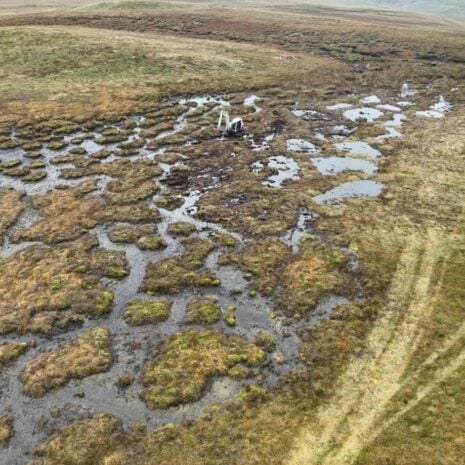July is a lovely time to get out and look up – make the most of the warm, summer evenings and enjoy the spectacle of night sky objects for the unaided eyes, binoculars and telescopes.
Astronomical darkness returns on 25th July in the early hours of the morning (1.34am-3.39am) for stargazers who like to hunt ‘faint fuzzies’ and see the Milky Way in all its glory. Look to the south-west after 1.30 am and look for a cloudy band of faint stars arching up into the sky – the darker the sky, be more detail you will see.
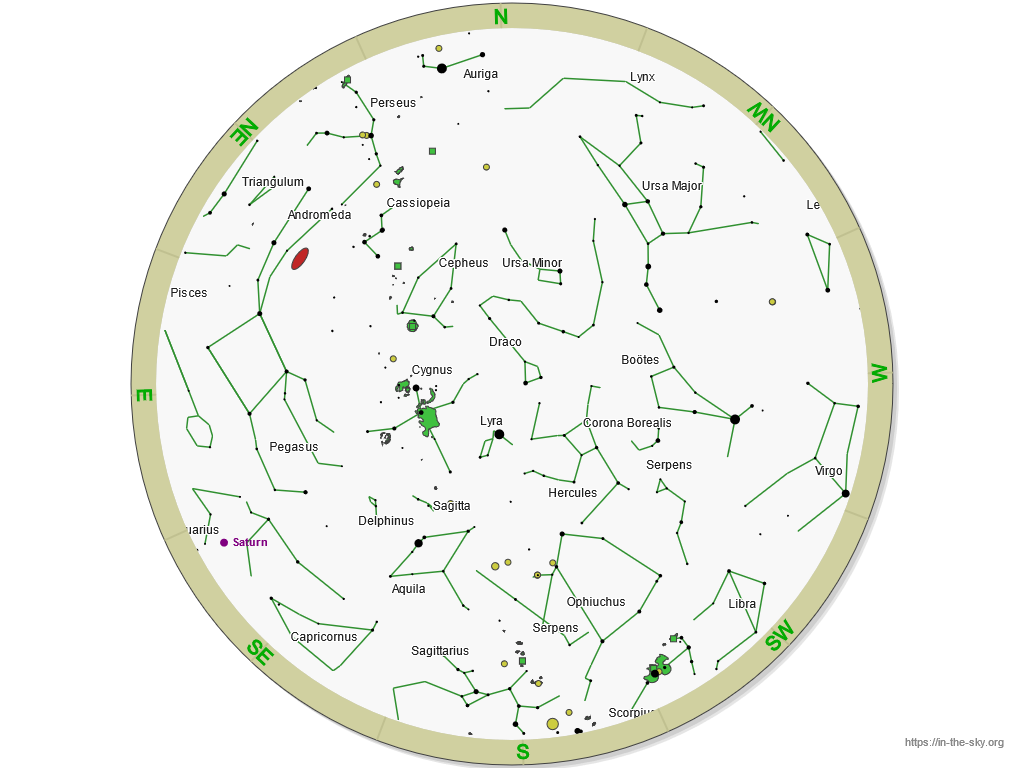
July Constellations
The best time of night to view the night sky is around midnight, where Cygnus the Swan and Hercules will be well-placed. The Square of Pegasus can be seen rising in the east and Virgo sets in the west. The constellations of Ophiuchus and Aquila can be seen in the south, with Sagittarius low on the horizon.
There is still time to catch a glimpse of noctilucent clouds. Although the season has been a fairly quiet one so far, forecasting these night shining clouds, positioned in the mesosphere, is very difficult and we could yet see an amazing display.
You can download the printable constellation map from here (credit: Dominic Ford, author in-the-sky.org).
The Full Moon occurs on 3 July and the New Moon on 17 July.
The Planets
Venus
The best time to see Venus is after sunset during the early part of the month – look towards the west and look for a bright star-like object near the horizon. Venus is in crescent phase and it is worth looking at this planet through a telescope. During the first week of the month, Mars and Venus will pass close to each other.
Image: Venus’ phases by Statis Kalyvas – VT-2004 programme.
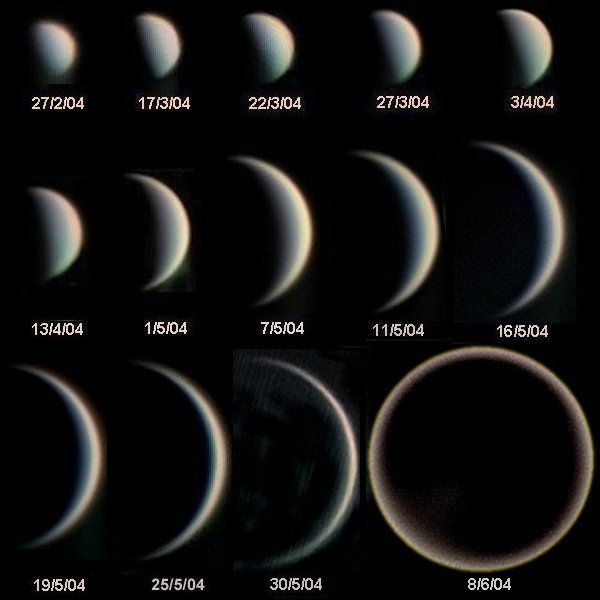
Mars
This planet is well positioned during the first week of July – also low on the western horizon and will emerge at dusk.


On 10th July, try to spot Regulus, a star in the constellation of Leo right underneath Mars. The best time to see this is an hour after sunset. This Mars-Regulus conjunction occurs roughly once every two years.
Jupiter
The best time to see Jupiter is during the second half of the month – it rises in the east at around 2am at the start of the month and at midnight towards the end.
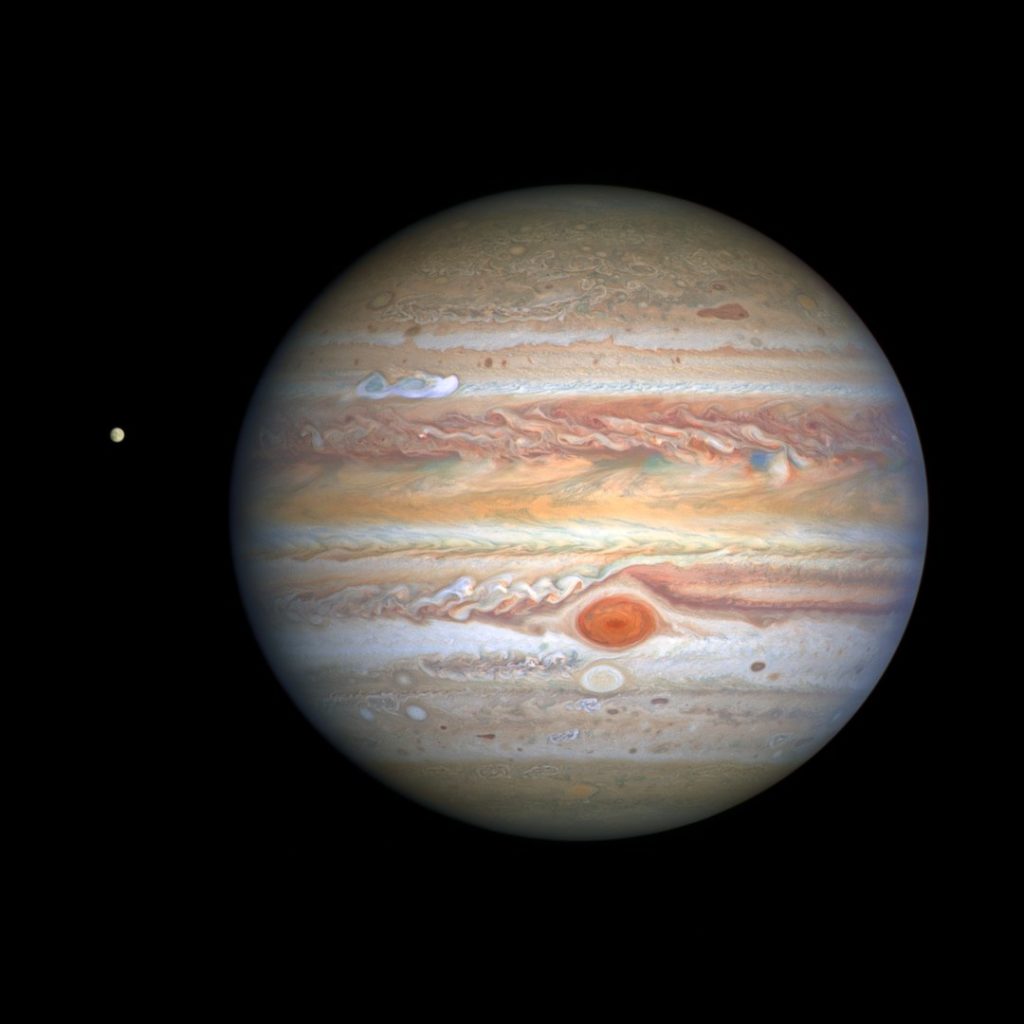
Saturn
Rises in the east at midnight at the start of the month and 10.15pm at the end.

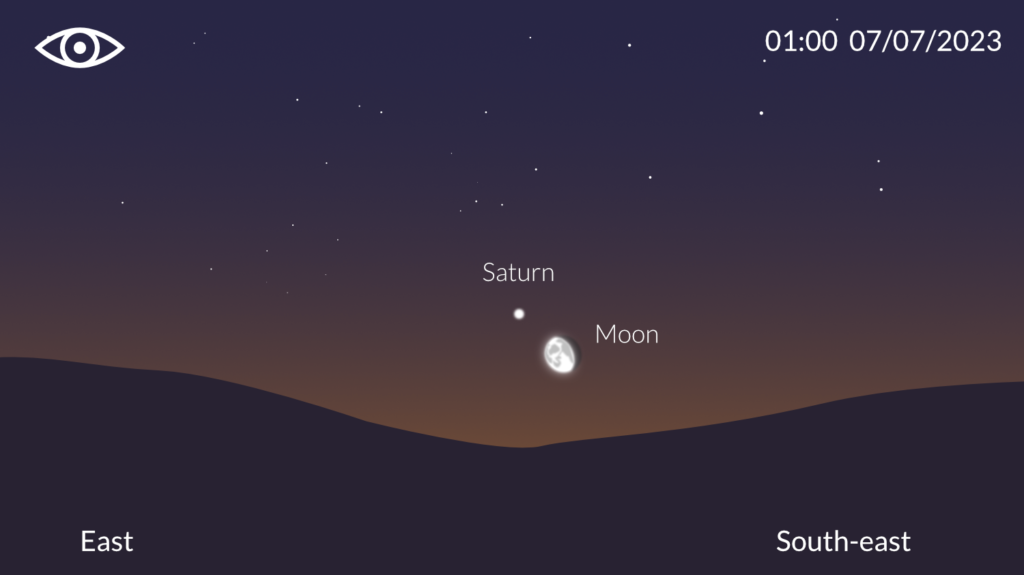
On 7th July for those who like to stay up late, the Moon and Saturn will appear close to each other; the Moon passing 4 degrees south of the planet. Look to the south-east at around 1am. You can see this with the unaided eye and if you have a telescope, view Saturn’s rings and a few of its moons.
Deep Sky Objects
M11 Wild Duck Cluster
RA: 18h 51m 05.0s | Dec −06° 16′ 12″
This open cluster might be a bit of a challenge to find, so find a dark sky, away from population centres. If you are able to spot this, congratulate yourself, as it’s the farthest object that can be seen with the unaided eye. It looks like a faint cloud with the unaided eye but through binoculars, you can see the faint patch of light in more detail. Only through a telescope will you be able to see the separate stars, resembling something fairly close to the image on the right. Messier 11 is 6,197 light years away from us.
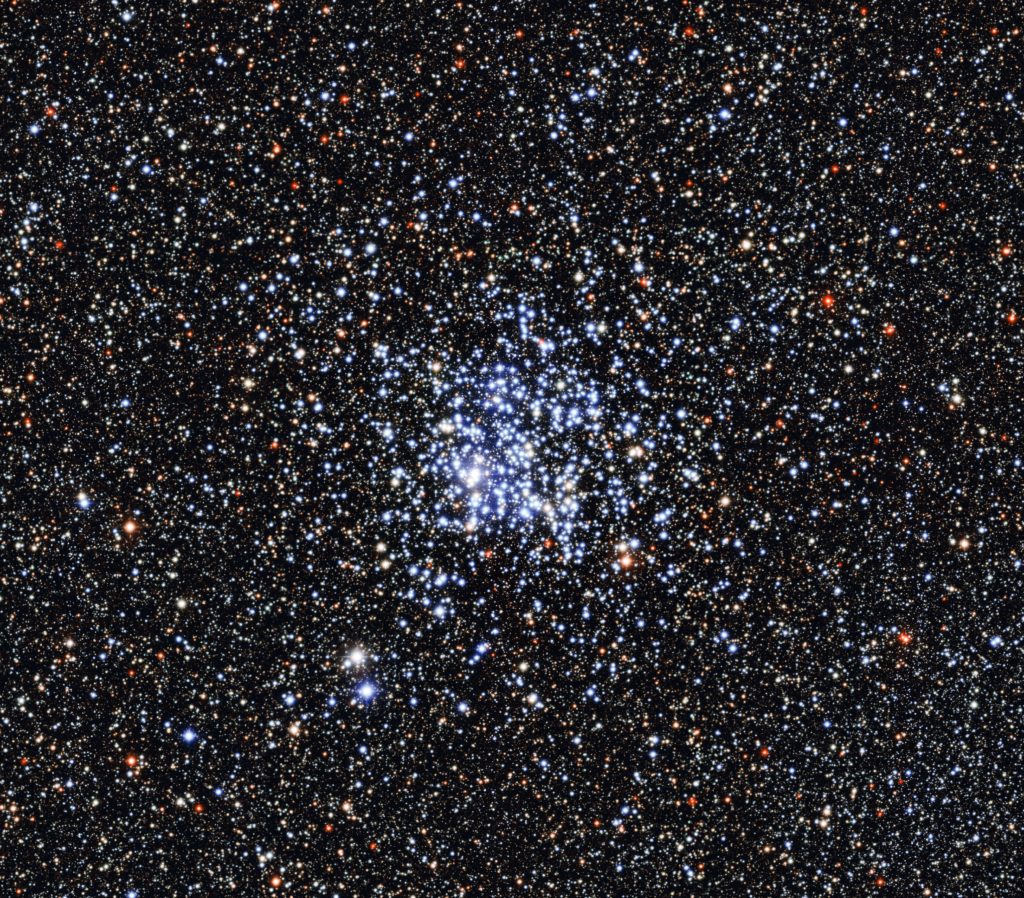
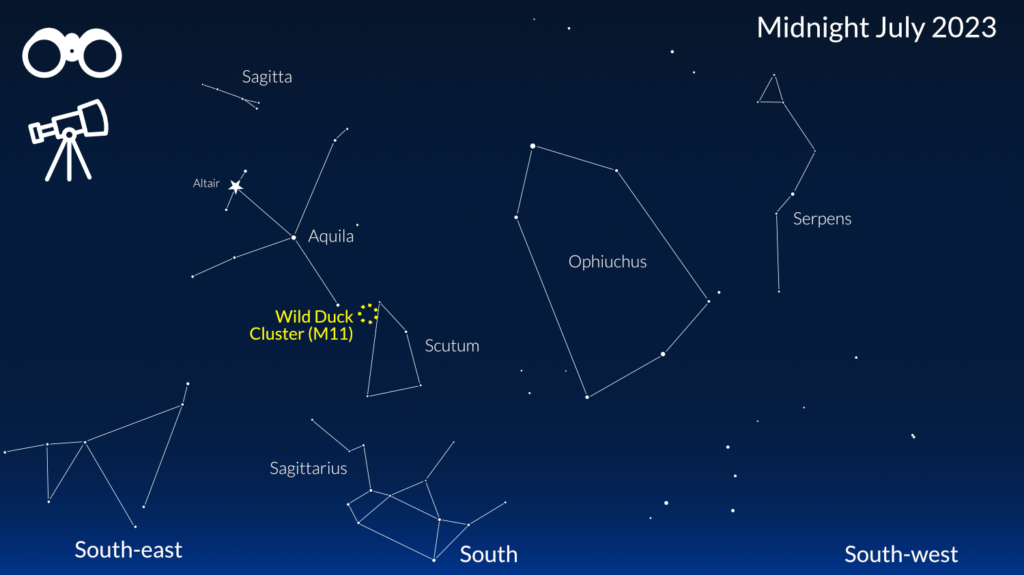
Nestled near the Milky Way in the constellation of Scutum, it can be found by looking for the three starred- head of Aquila the Eagle, the brightest star being Altair. Follow the body of this Eagle constellation down to its tail and the very faint cluster lies in the four-o clock position.
Messier 13 – The Great Cluster in Hercules
RA 16h 41m 41s | Dec +36° 27′ 35″
Two deep sky objects to note is the stunning Great Cluster in Hercules (M13) and M92, both globular clusters lying 22,180 and 26,740 light years away respectively. M13 contains 300,000 stars and M92, around 330,000.
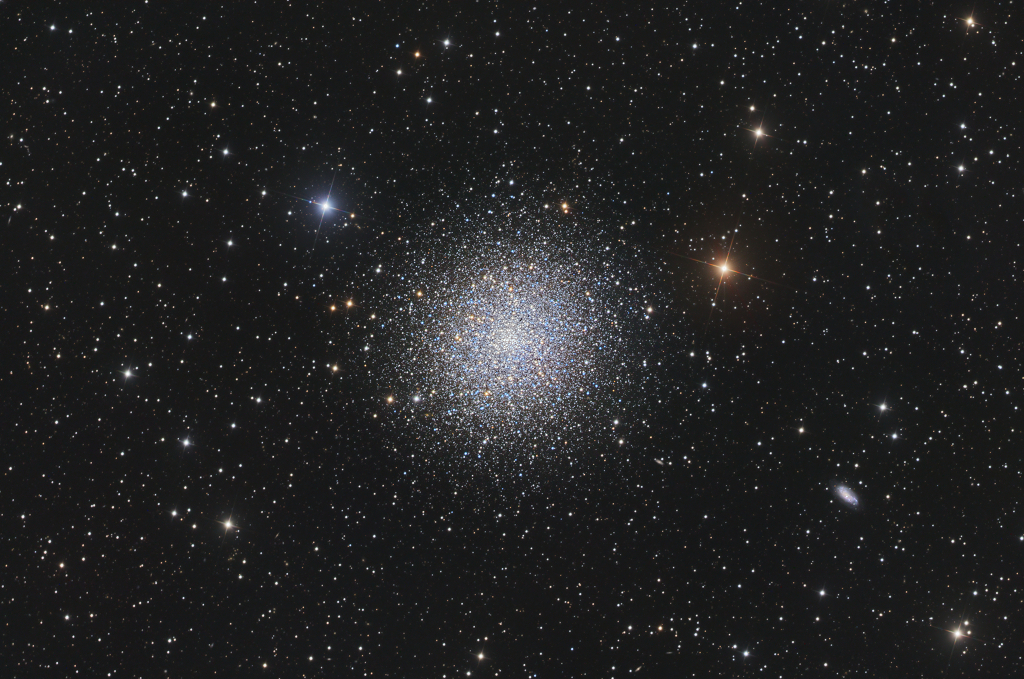

Despite M13 being much brighter, containing slightly less stars than its neighbour, it has double the radius and is closer to us. You can find these two clusters with binoculars, appearing as fuzzy objects and through a telescope you may see individual stars that look almost like a sparkling cluster of diamonds.


